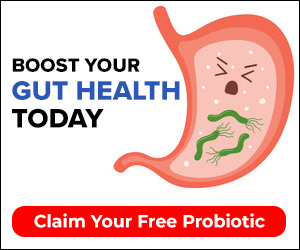There has been an alarming trend since the 1980’s that has been threatening the American Male.
It’s has seen the decline of the American Alpha Male, and with the passing of each decade, men are becoming more beta than they are alpha.
If you don’t believe me, think back to our male American role models of the past…
Are we as alpha as our fathers and grandfathers were?

What about our icons? Are our male icons of today as alpha as say John Wayne, Clint Eastwood, Robert Conrad, or Burt Reynolds?
The next time you watch a newer movie with a white, American male under the age of 40, does he portray the same, strong, male, masculine characteristics of men from a previous era?
Sadly, the answer to that question is no.
Think about this.
Is it a coincidence that we are now importing leading men from Australia or Ireland to play many of our heroic American film roles?
The Decline of the American Alpha Male
So what’s happened to us? Why have we become more Beta than Alpha in recent years?
There are several reasons for this, and studies are showing that from a biological standpoint, we are not as masculine as our predecessors.
For example, according to a study published in the Journal of Clinical Endocrinology and Metabolism in January, 2007 there is sufficient evidence showing that testosterone levels spanning three decades were on the decline.
They studied the testosterone of men ranging from the age of 45 to 79 in three waves 1987 – 1989, 1995 – 1997, and 2002 – 2004 and discovered that men who were 65 in 1987 had much higher testosterone levels compared with men of the same in age in 1995 and 2002.
Not only are testosterone levels taking a nose dive, but so are sperm counts. Studies have shown that not just sperm quantity, but sperm quality is on the decline.
This trend is very alarming and troubling with regard to our survival as a species.
Why We Have Become Less Manly Than Our Fathers Were

What’s behind these alarming trends?
Aside from lifestyle, today’s male is exposed to more endocrine disrupting toxins and chemicals than ever before.
Although the exposure may be small with each individual chemical, the combination of what we are exposed to on a daily basis becomes quite significant and overwhelming.
In recent years, men and boys are exposed to more estrogen mimicking substances than ever before that are demasculinizing us.
These substances can be found in the water we drink, the food we eat, prescription drugs we take as well as environmental factors we are exposed to on a daily basis.
What are Endocrine Disruptors?
According to the National Institutes of Health (NIH), Endocrine Disruptors are chemicals that may interfere with the body’s endocrine system and produce adverse developmental, reproductive, neurological, and immune effects in both humans and wildlife.
Endocrine disruptors interfere with our hormones, can cause cancerous tumors, birth defects, and other developmental disorders.
Thanks to the chemicals we’re exposed to on a daily basis, we’re putting untold amounts of xenoestrogens into our bodies every day that mimic the female hormone estrogen.
Xenoestrogens are basically estrogens in chemical form while phytoestrogens are estrogens naturally occurring in foods and plants. They both mimic the action of estrogen in our body at the cellular level and can in fact alter hormonal activity…scary stuff!
Let that sink in for a minute.
Our bodies are being flooded with estrogen! No wonder why so many men and boys are developing breast tissue, have lower than normal testosterone levels and sperm counts.
Here’s something even more shocking to our children and future generations.
EDC damage is believed to be most severe during prenatal or early pregnancy exposure. According to the World Health Organization (WHO), EDCs can also be transferred from the pregnant woman to the developing fetus or child through the placenta and breast milk. Pregnant mothers and children are the most vulnerable populations to be affected by developmental exposures, and the effect of exposures to EDCs may not become evident until later in life.
It’s important to note that during the first few months of life, a baby boy has testosterone levels that could be as high as that of an adult male! This “testosterone surge” readies a boy’s hormonal system for puberty both for normal development of the sexual organs and also patterns of male behavior.
Exposure to estrogen mimicking endocrine disrupting chemicals during this crucial time in the first few months of life for a baby boy can adversely affect what should be normal, male hormonal development.
Common Sources of Endocrine Disruptors
Your first defense against this chemical warfare being waged against your manhood is to be able to identify the most common sources of endocrine disruptors so that you can protect yourself, your family and future generations.
Beware of Phthalates, BPA’s, and Parabens
While there are thousands of hormone disrupting chemicals and toxins we are exposed to within our environment on a daily basis, the three most prevalent that show up in just about everything are Phthalates, BPA’s and Parabens.
- Phthalates are mainly used as plasticizers and are added to plastics to increase their flexibility, transparency, durability (making them harder to break) and longevity.
They are used in hundreds of products, such as vinyl flooring, adhesives, detergents, lubricating oils, automotive plastics, plastic clothes (raincoats), and personal-care products (soaps, shampoos, hair sprays, and nail polishes).
- BPA stands for bisphenol A. BPA is used to manufacture polycarbonate plastics. Polycarbonate plastics are often used in containers that store food and beverages, such as water bottles, plastic dinnerware, automobile parts and toys.
BPA resins are used in the protective linings of canned foods and beverages, dental sealants, as well as thermal paper used for sales receipt and movie tickets, that can easily leach out onto your hands.
- Parabens are a class of chemicals found in personal products that act as preservatives and antimicrobials. Parabens are used in a wide variety of cosmetics, as well as in foods and drugs.Cosmetics that may contain parabens include makeup, moisturizers, hair care products, and shaving products, among others.
Cosmetics sold to consumers in stores or online must have a list of ingredients, each listed by its common or usual name. This is important information for consumers who want to find out whether a product contains an ingredient they wish to avoid. Parabens are usually easy to identify by their name, such as methylparaben, propylparaben, butylparaben and ethylparaben.
Eat Foods that are Free of Pesticides, Herbicides, and Added Hormones
Research shows that many agricultural pesticides disrupt male hormones.
Scientists are strongly recommending that all pesticides in use today be screened to check if they block testosterone and other androgens, the hormones critical to a healthy reproductive system for men and boys.
To reduce your risk to these chemicals as well as GMO’s, you’ll want to buy and eat organic produce and free-range, organic meats to reduce your exposure to added hormones, pesticides and fertilizers.
Stay Away From Soy!
Soy has been touted in health circles as being “good for you”, however, more and more studies are showing soy to be quite the opposite and should be avoided, especially for men.
Soy is one of of the heaviest subsidized crops in the United States and, almost all soy is genetically modified.
Soybeans mean big business for farmers and food manufacturers, as well as a huge boom for Monsanto which creates the toxic pesticide Roundup which is sprayed on crops and, is also the leading manufacturer of GMO soybeans.
With the case of soy, your health takes a back seat to profits and big business.
Soy contains isoflavones which are plant-derived compounds that can disrupt your hormone levels and function causing a decrease in testosterone. It’s estrogen-like (phytoestrogen) effects can cause enlargement of breast tissue, aka gynecomastia and potentially cause erectile dysfunction as well.

Avoid Bottled Water
With the purity of our nation’s drinking water supply in question, many people turn to drinking bottled water, thinking it is a better, safer, solution.
Before you reach for bottled water, you first need to ask yourself if drinking bottled water is better than drinking tap water?
Like tap water, drinking bottled water has its risks as well when it comes to being exposed to endocrine disrupting chemicals.
The federal government does not require bottled water to be safer than tap. Tap water in most big cities must be disinfected, filtered to remove pathogens, and tested for cryptosporidium and giardia viruses. Bottled water does not have to be.
Both kinds of water are tested regularly for bacteria and most synthetic organic chemicals, but city tap is typically assessed much more frequently. For example, bottled-water plants must test for coliform bacteria just once a week; city tap needs to be tested 100 or more times a month.
When comparing tap water to bottled water, in short, the bottled water industry is actually LESS regulated than your local water system.
Also, when it comes to bottled water, the actual bottle that it comes in causes concern. Plastic bottles contain phthalates and BPAs which can leach into water over time.
We obviously need to drink water, but the question is, how can you protect yourself and your family from harmful chemicals?
The short answer to that question is that your best line of defense is a water filtration system and to use glass bottles or steel containers instead of plastic water bottles.
What Can You Do?
Knowledge is the best weapon. With knowledge we can change our lifestyle and diet to protect ourselves, our children and future generations against some of these toxins that threaten our survival.
Here are some actionable items you, your family and friends can start doing right away.
- Ditch the bottled water and tap water for filtered water
- Ditch plastic cups and containers for glass
- NEVER microwave foods in plastic or styrofoam containers
- Choose organic foods over conventional foods when appropriate
- Avoid GMO’s
- Avoid Grain Fed Beef. Choose Grass Fed instead.
- Avoid or reduce consumption of processed foods
- Choose fresh food over canned foods
- Choose products that are paraben-free
- Avoid Soy
- Use glass bottles or steel containers instead of plastic water bottles
Keep in mind it isn’t just one thing that is causing these changes in our bodies – it’s the accumulation of these chemicals. Little changes in our everyday life can make big differences in our health and the survival of man.

Click Here to STOP Hormone Disrupting Chemicals
& Reclaim Your Manhood














































































